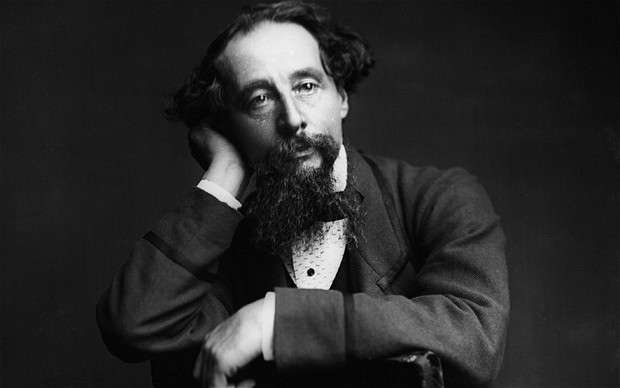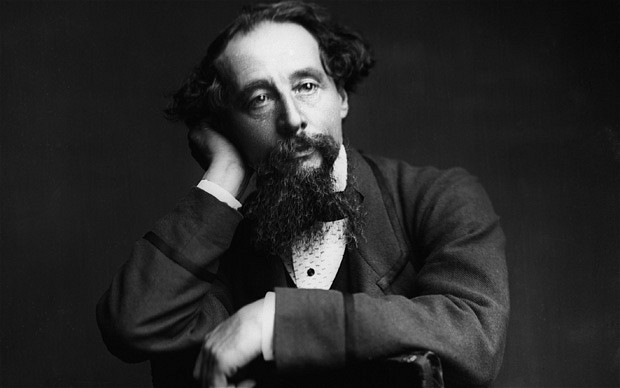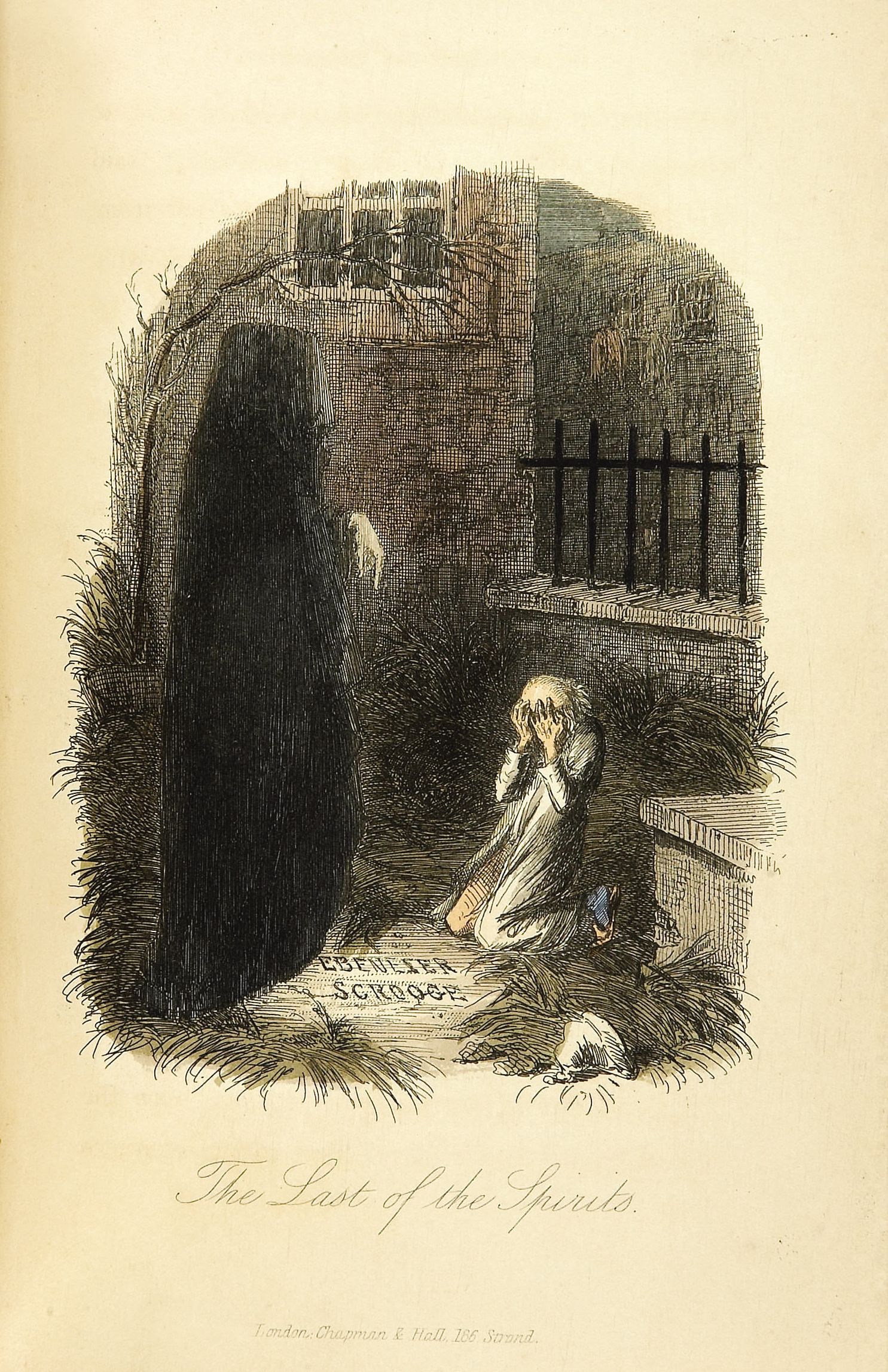 There was probably no one else who loved Christmas ghost stories more than Charles Dickens. In fact, majority of the Victorian Era brought forth a new fascination of ghosts, spirits, apparitions, and all things weird. The rise of Spiritualism was also during this same time. So it is to no surprise that the holiday season would have experienced a spooky twist. Whilst in the reign of Spiritualism, by 1855 Dickens himself was a practicing mesmeric doctor, as well as a member of The Ghost Club (founded in 1862)
There was probably no one else who loved Christmas ghost stories more than Charles Dickens. In fact, majority of the Victorian Era brought forth a new fascination of ghosts, spirits, apparitions, and all things weird. The rise of Spiritualism was also during this same time. So it is to no surprise that the holiday season would have experienced a spooky twist. Whilst in the reign of Spiritualism, by 1855 Dickens himself was a practicing mesmeric doctor, as well as a member of The Ghost Club (founded in 1862)
Dickens is most famous for his beloved novella, A Christmas Carol, first published on December 17th, 1843. In fact, we are just a week shy of the book’s 170th birthday. Considering the popularity of the tale of old Ebenezer Scrooge, there are seldom few who know of the moving story of a stingy old man’s change of heart after visitations from spirits, and they lessons they taught him.
It may be hard to fathom, but the Christmas that we know today, was not the Christmas that happened in the 19th century, especially in London. While there were “12 days of Christmas”, seldom did people take the day off and many worked during the Christmas holiday. Christians strictly followed the Bible, which believe it or not, didn’t condone the celebration of Christmas. It didn’t have the Christian ties that it has today, and was often just a time for parties and sexual liberties. The Puritans even attempted to ban Christmas during the 17th century. But to bring the point home, the Christmas that Charles Dickens experienced was not like Christmas today.
In a sense, we can give regards to Dickens for inventing the Christmas that we know and love. This is likely why A Christmas Carol became so popular. While this classic tale certainly remains as Dickens’ most famous holiday work, it certainly was not the only piece of literature he wrote with spirits and the weird intertwined in the Christmas holiday. Many regard Dickens as the father of the Christmas tradition we know now.
In 1836, seven years before A Christmas Carol was written, Dickens wrote a short story for The Pickwick Papers called, The Story of the Goblins Who Stole a Sexton, and it tells the story of a man named Gabriel Grub who drinks and works on Christmas day as a caretaker and gravedigger. He is then kidnapped by goblins and taken to an underground cave where they show him his fellow humans, including a small boy belonging to a poor family that dies. One could say that Gabriel Grub is Scrooge and the small boy was Tiny Tim. The goblins also beat Gabriel mercilessly, and the next morning, he is a changed man.
In 1848, Dickens wrote his final Christmas novella called, The Haunted Man and the Ghost’s Bargain. Unlike its predecessor, Haunted Man was a much more grisly tale. It tells the story of a chemist named, Redlaw. For him, and many others, Christmas is a grim reminder of lost loves, hurts, and regrets. He is then visited by a Phantom who offers to cancel out his hurts. Redlaw is amazed and intrigued as to how this visitor can erase such a thing. But Redlaw soon learns that in order to forget the past hurts, he has to let go of the treasured people who caused the hurts and regrets in the first place. And the lesson becomes that you can not forget one without affecting the other. It’s truly a moving tale, and if you would like to read it for free, just click on the following link: The Haunted Man. Charles Dickens wrote several more Christmas ghost stories for The Pickwick Papers as well as other publications.
After Dickens published A Christmas Carol, he began a tradition of publishing works each Christmas after. In 1859, Dickens wrote The Haunted House, in collaboration with several authors, for the weekly periodical All Year Round. Once again, this was a Christmas ghost story that featured the spiritual and the weird. There are numerous other Christmas ghost stories written by Charles Dickens that are available on the web for free and very enjoyable.
If you would like to buy a book called, Christmas Ghost Stories with A Christmas Carol, The Story of the Goblins who Stole a Sexton, The Haunted Man and the Ghost’s Bargain, and The Haunted House, you can purchase it on Amazon here for less than $15, and it qualifies for Prime shipping.
Sources/Links of Interest




Alex,
Boy this is gonna be a left field comment but I am sure you will find it quite interesting. I have been ‘researching’ the origin of the Grays, the image as well as the name, for a class of aliens often referred to in Ufology and related fields. Whitley Strieber made one of them famous on his cover for “Communion”.
Needless to say I found a reference to a puppet in a book titled “Beyond Science Fiction”:
“As I was in the process of writing this book I was following up on some strange relics exhibited at the Detroit Institute of Arts in my hometown. In a display of very old puppets, I was surprised to see a puppet of a Gray included in the collection. He had the typical large head and big black eyes, his frame thin and stick like. The most odd thing was the title and date. “Future Ghost 1920″…”
Now I went so far as to email the “Detroit Institute of Arts” re this puppet. And their generous reply was that it originated from a production of “A Christmas Carol” in 1921- the Ghost of Christmas Yet to Come. Your comment re “The Pickwick Papers” indicates the idea for the ghosts in the Carol may indeed have been in the goblins from the tale in Papers. Wikipedia says something quite similar.
The puppet I mentioned above, a marionette, is part of the Paul McPharlin Puppetry Collection. It does indeed have a curious resemblance to the Grays and I tried to include, from the generous reply of the Curator of the collection, a picture of the ghost with a part of the cast as well but was unable to do so.
The interest of Dickens in mesmerism and the fact he was a practitioner as well came as something of a shock! Your article, short and sweet, is still quite interesting and packed with curiosity!
James
Another fascinating story, Alex! I only wish the Ghost Stories came in a kindle edition since I have a hard time reading paperbacks. I will see if I can find each of these as I always liked Dickens! Thanks for the nudge!
[…] December of 1843, Charles Dickens’ A Christmas Carol was printed and published. Within its pages, Dickens writes of Ebenezer Scrooge – a miserly old […]